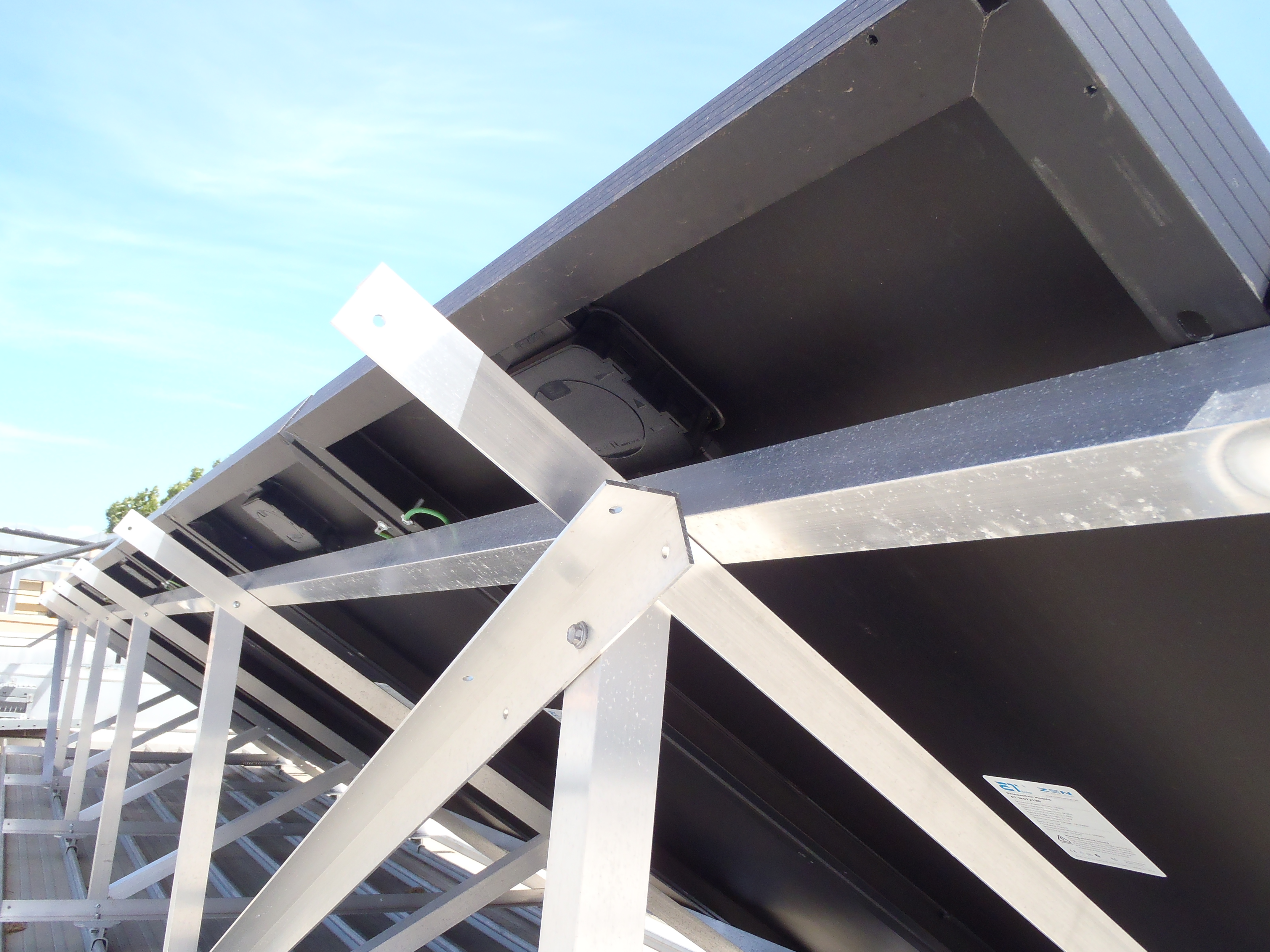A rooftop solar photovoltaic (PV) system converts the sun’s energy into electricity. That energy is usually delivered to the building first and excess is often exported back into the main grid.
Batteries can be connected to the solar system and the stored energy can be used when needed.
The person selling the solar system cannot guarantee any prices set by energy retailers, for example - solar feed-in tariffs.
Make sure you consider the information given to you by the person selling the solar system. Check that they are using relevant energy costs and feed-in tariffs to calculate your payback period.
Choosing your solar energy option
When you have a new solar system installed, you will likely need a new smart meter installed as well. This could mean the type of energy plan you have with the retailer will change.
Talk to your retailer about how installing a smart meter will change your current electricity plan.
The best solar PV system and battery will depend on:
- how much electricity you need
- the time of day you use electricity
- how much roof space is available
- the direction and orientation of panels.
Your installer will be able to help you decide.
Find an installer - Clean Energy Council
Location and position
Solar PV panels produce more power if they are pointed directly at full sun between 9.00 am and 3.00 pm:
- Make sure there's no shade on the panels including from things such as an antenna.
- Face the panels north or spread them over east and west areas.
A battery’s performance will change depending on the temperature it is exposed to. Batteries need to be insulated, well-ventilated and should be out of direct sun – the south and east sides of a building are usually the best location.
Make sure you:
- don’t install batteries in living areas – outside is the safest, but some batteries can be in garages, cellars or laundries.
- protect the battery and its enclosure from vermin, pets and children.
- don’t store anything on top of or against the battery or its enclosure.
Connecting to the electricity grid
Your installer will usually organise for your solar PV system to be connected to the electricity grid. They will need to complete the small embedded generation application and have it approved by SA PowerNetworks.
An electricity meter that is able to measure the import and export of energy is needed. You’ll need to give consent for one to be installed. Talk to your solar installer or energy retailer about this step.
There could be a charge to install a new electricity meter. Energy retailers will be able to confirm if any charges will apply.
Export limits
The amount of energy a new solar system can export has changed.
The energy you can export will depend on:
- connection type - for example, single phase or three phase
- inverter capability
- location.
Ask your installer about export limits specific to your property. SA PowerNetworks also has information about flexible solar exports.
Guarantees and warranties
Your solar PV system, battery and most installations are covered by automatic consumer guarantees to ensure they do what they claim to do, and they work.
A warranty offered by the supplier is separate and sometimes gives you extra cover – but not always. A warranty doesn't replace the standard consumer guarantee.
Safety checks after installation
Check your solar PV system installation - video
Secure cables
The system's cables should be secured and enclosed to protect them. Unprotected cables (for example, lying loosely across your roof) could easily become damaged and are a safety risk such as electric shock or fire.

image - protected and secure cables beneath solar panels
Safety signage
Your system should have labels which clearly identify switches (isolators) controlling the:
- main electricity supply
- solar panels (DC)
- inverter unit (AC)
- batteries (DC)
The solar PV system or battery should also have:
- clear shutdown instructions
- a label on your main switchboard and meter box indicating more than one energy supply
- a sign explaining the type of battery (if installed).
- a shut down procedure isn’t displayed
- you don’t understand the instructions
- your installer hasn’t explained their use to you.
A certificate of compliance
Solar PV systems and batteries need to be installed by a licensed electrician.
They must give you a certificate of compliance (eCoC) within 30 days of the system being connected.
System maintenance
Make sure your installer:
- gives you a maintenance schedule
- explains what your system can do and what are its limitations
- helps you understand critical signs for your system.
A licenced electrician should service your battery storage system every 12 months.
If you start using more electricity without an obvious reason, check with your installer that the system is working properly.
Related information
Other websites
- Dynamic solar exports - Department for Energy and Mining
- Solar, batteries and smarter homes - Department for Energy and Mining
- Virtual power plant – Department for Energy and Mining
Contact
- Energy Advisory Service - installing solar panels or battery storage
- Office of the Technical Regulator - safety concerns

